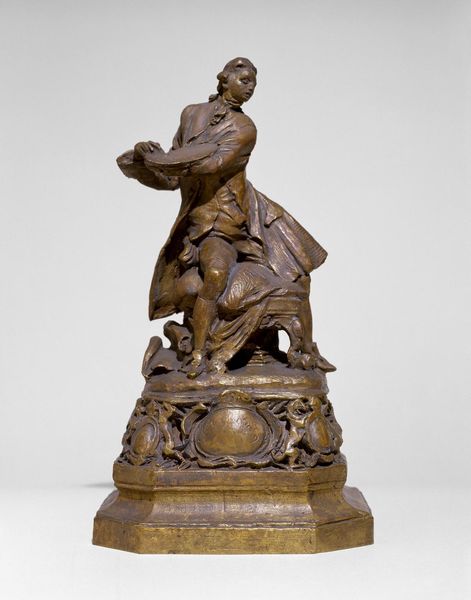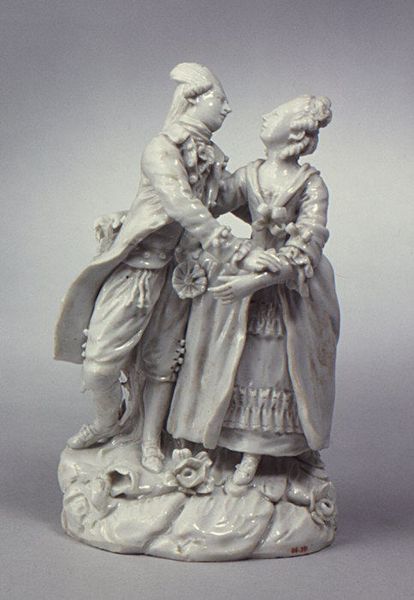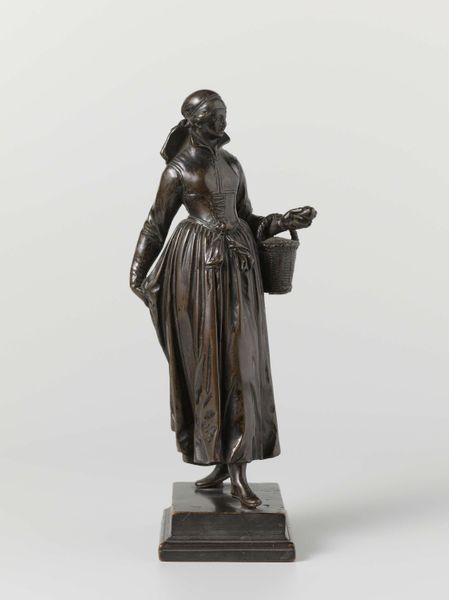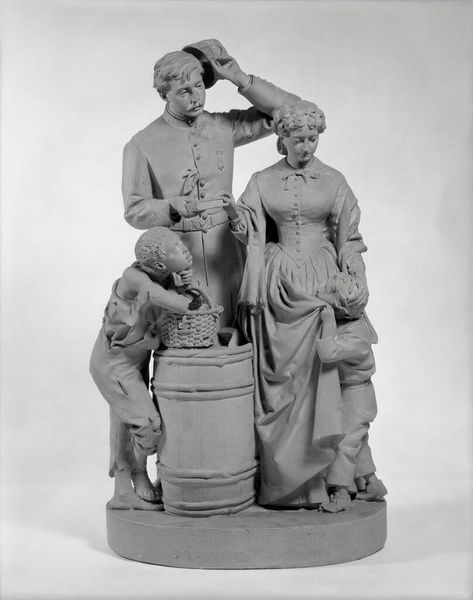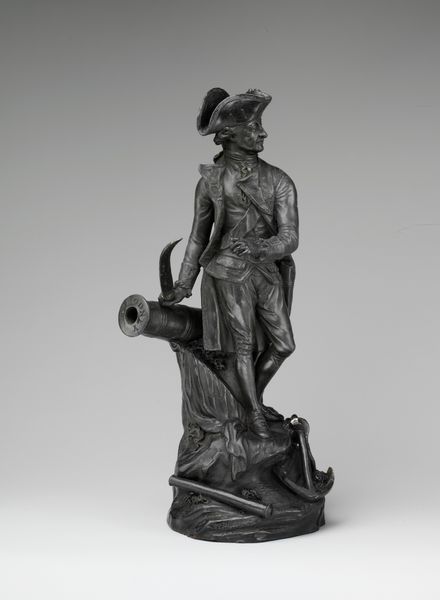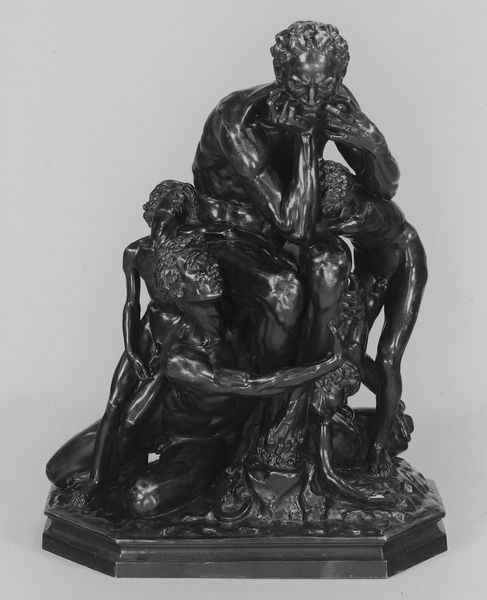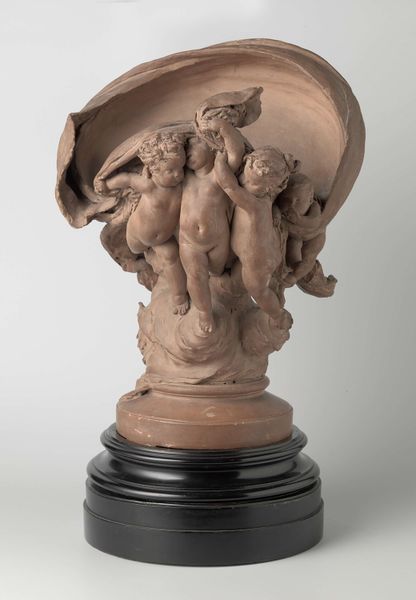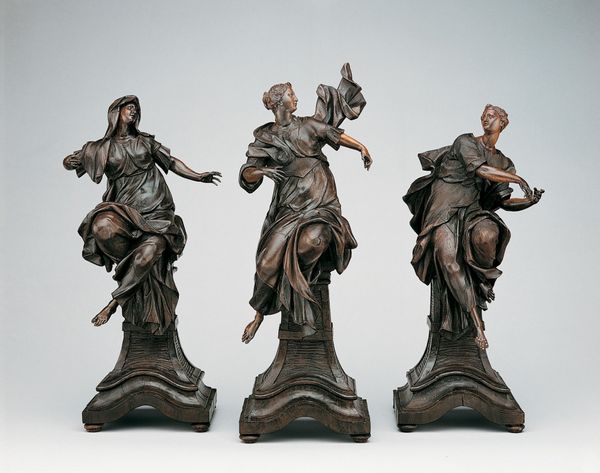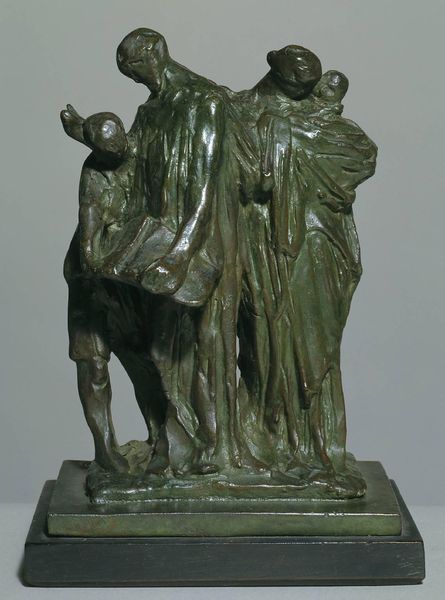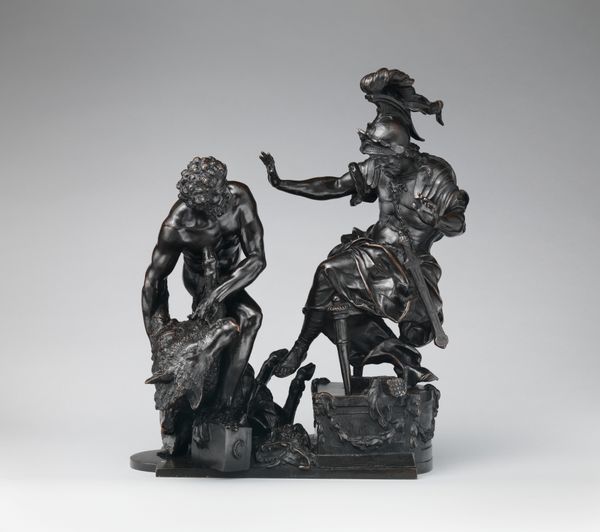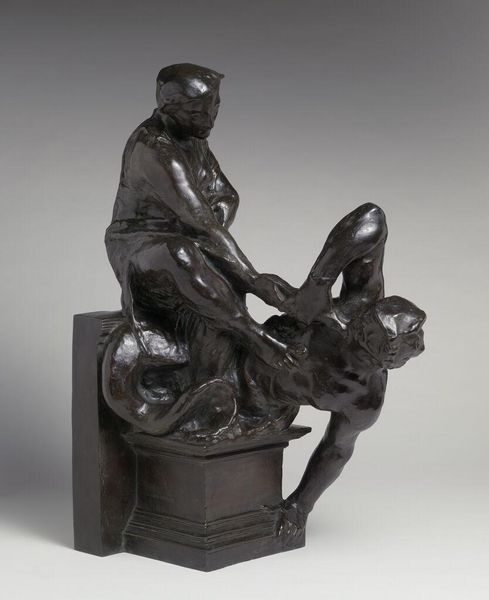
bronze, sculpture
#
narrative-art
#
sculpture
#
bronze
#
figuration
#
sculpture
#
genre-painting
#
history-painting
Dimensions: overall: 58.1 × 31.12 × 22.23 cm (22 7/8 × 12 1/4 × 8 3/4 in.)
Copyright: National Gallery of Art: CC0 1.0
Curator: Ah, “Taking the Oath and Drawing Rations,” a bronze sculpture fashioned around 1865 or 1866 by John Rogers. Look at the subtle complexity he coaxes from the bronze, almost making it breathe. Editor: I see a somber domestic tableau, frozen. It makes you wonder about the weight of that oath and what emptiness awaits after "drawing rations." The faces feel etched with a worry that words alone can't capture. Curator: Rogers really taps into something elemental there. He captures these post-Civil War scenes with incredible feeling—offering poignant, accessible narratives that struck a chord with many American families. The textures and details contribute so much. Notice how the uniform folds differ from the fabric of the woman's dress, and that playful detail of the boy and his basket...it creates such a relatable and human scene, but framed with almost painterly drama. Editor: I’m drawn to the rigid geometry of the composition—the verticality of the figures countered by the barrel's roundness. This kind of geometric play structures how the figures relate in space and almost underscores the formal exchange happening. Then there's the contrast of dark tones suggesting the solemn oath to light capturing the boy’s inquisitive posture that pulls it all together—almost as though those gestures are acting out two counter-posed futures. Curator: Exactly. You feel that tension. There’s the stark legal commitment juxtaposed with fragile domestic life. It really digs into those post-war struggles: oaths of allegiance for Confederate veterans, rations for families barely scraping by, the uncertainty of belonging. But that scene plays out not with grand strokes of history painting, but through those everyday lives and simple moments… That’s where Rogers works his magic. Editor: And in a way, it holds a formal echo to neoclassical ideals about virtue. You see the heroic, clean line expressed in the clothing against this stark moral decision being made, where private sacrifice builds a broader future, rendered for viewers in perfect perspective. That balance holds so much weight, and lingers long after we turn away. Curator: I leave this piece feeling like history is carried as much in gestures as it is in declarations, and that there is real meaning woven in every subtle line of it, Editor: For me, this piece uses sharp geometries of form and contrasting dark bronze tones to capture something timeless in facing everyday lives in extraordinary times.
Comments
No comments
Be the first to comment and join the conversation on the ultimate creative platform.
